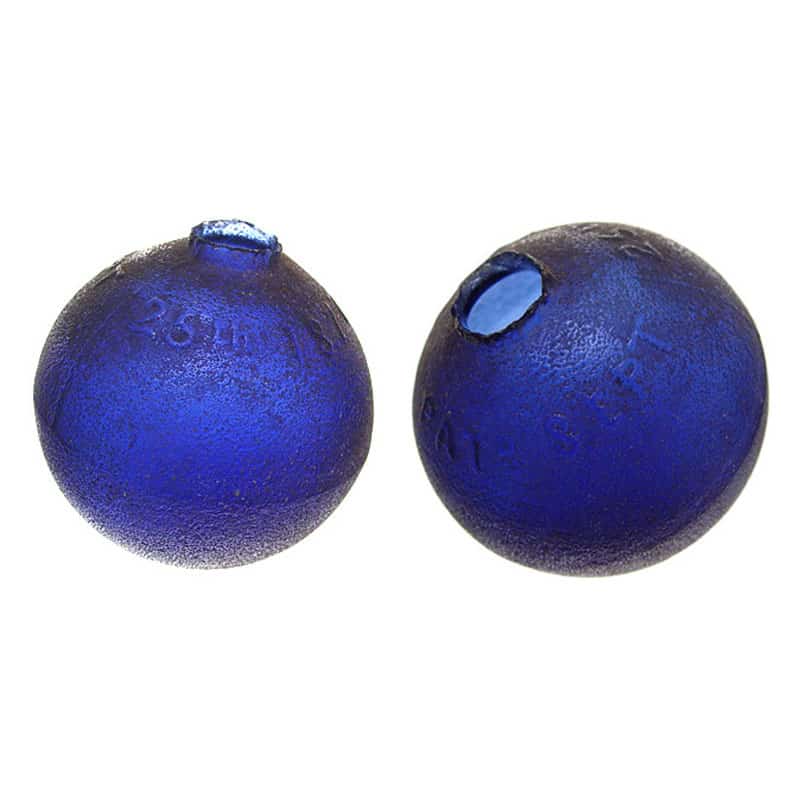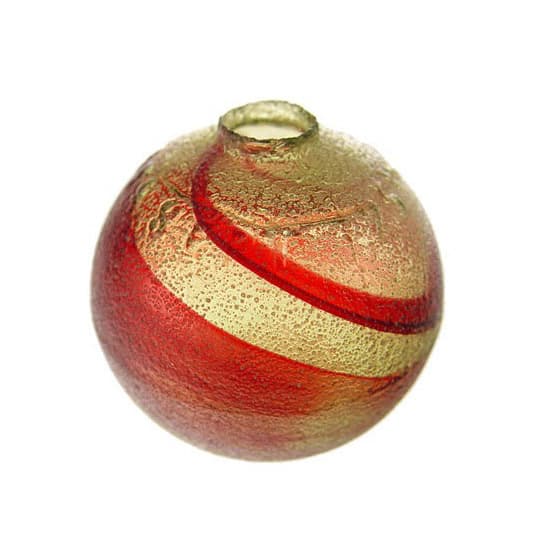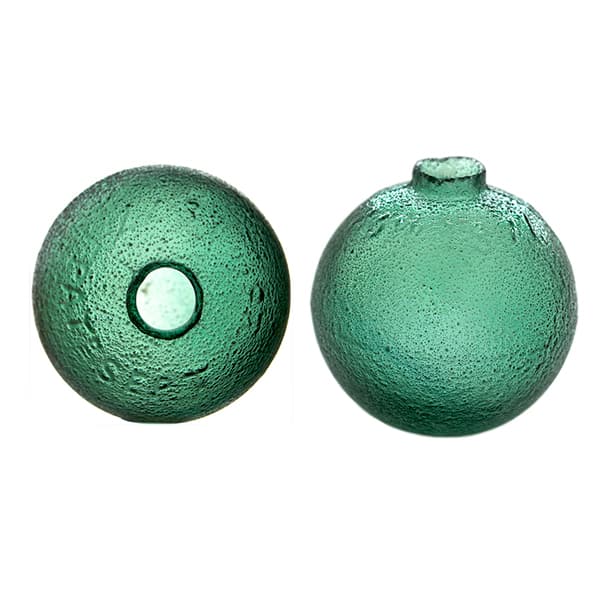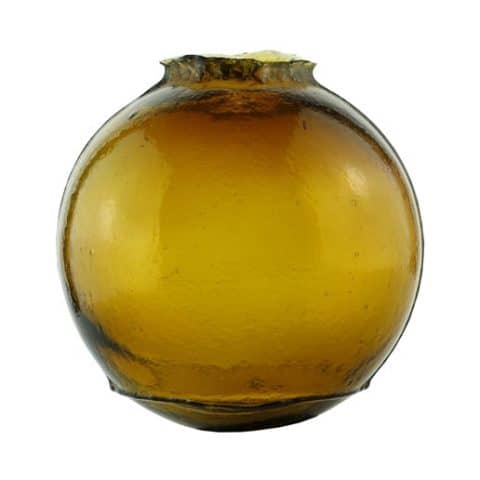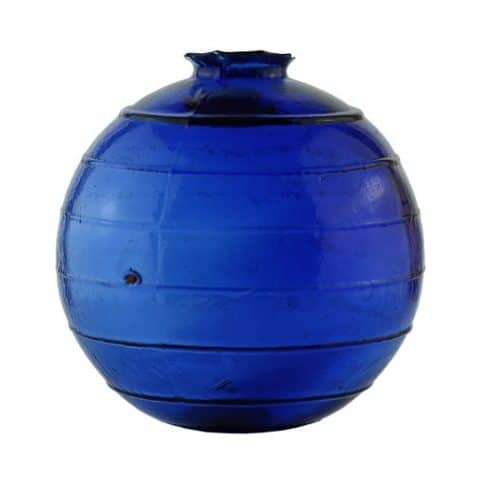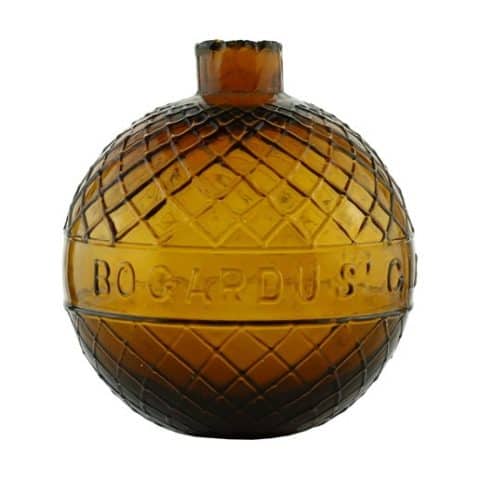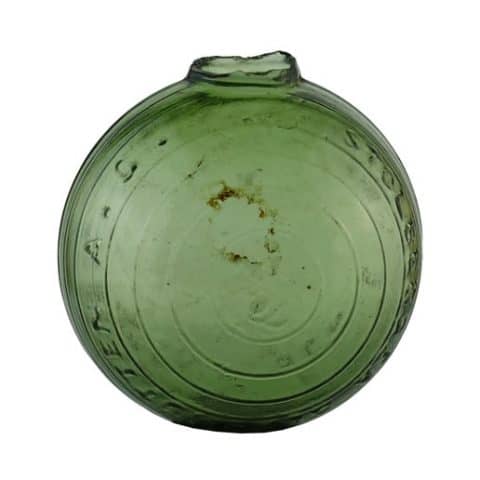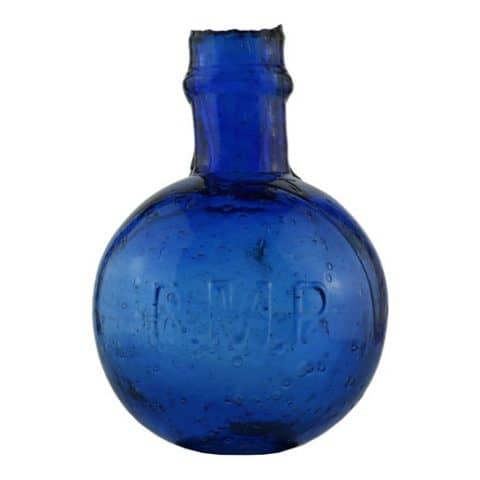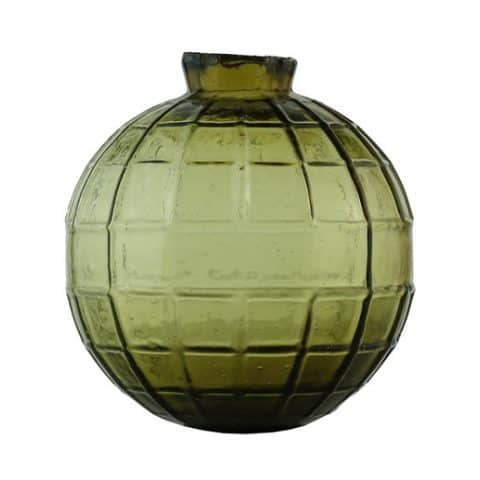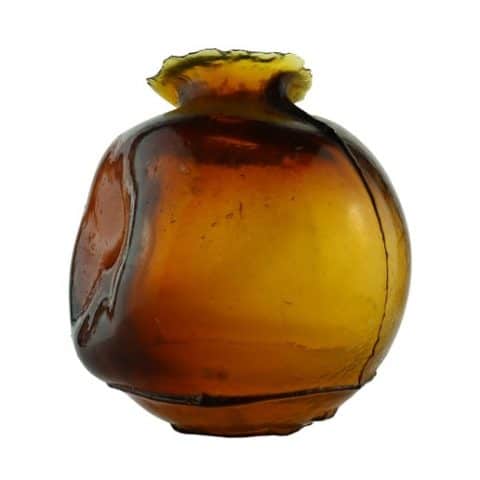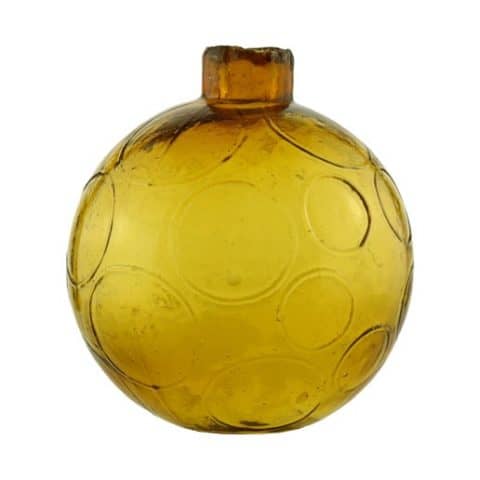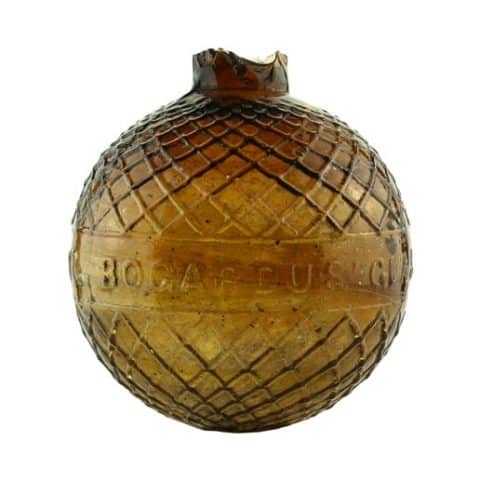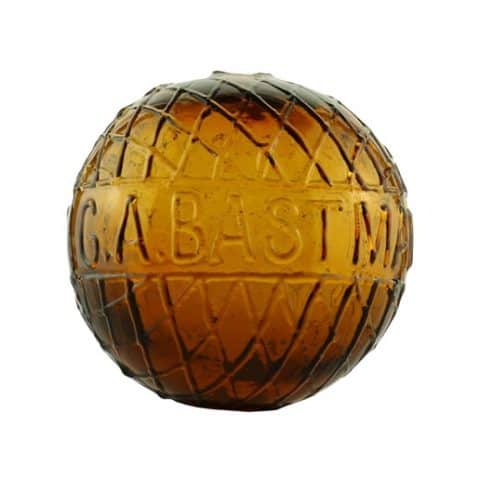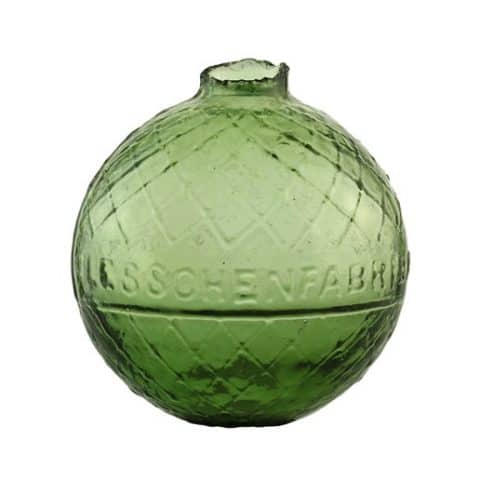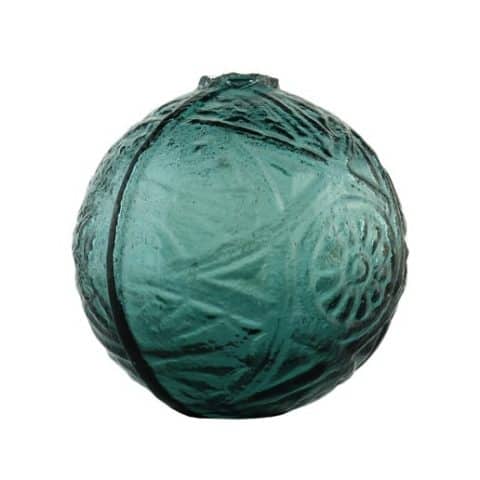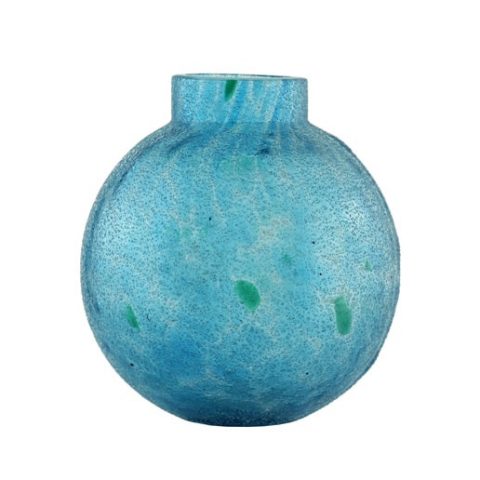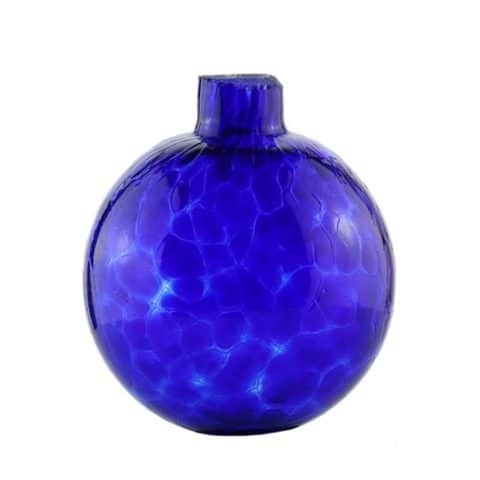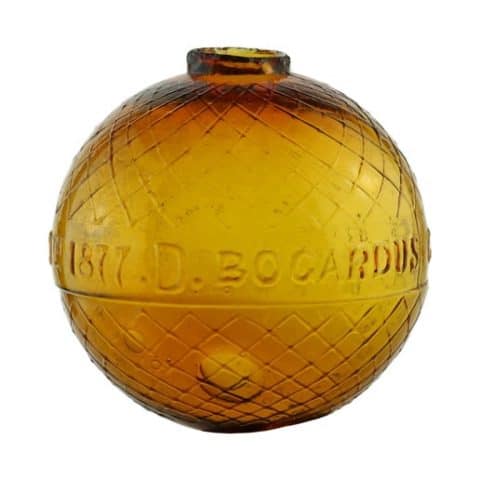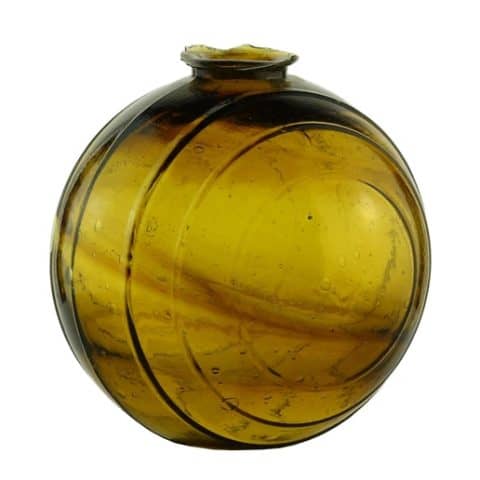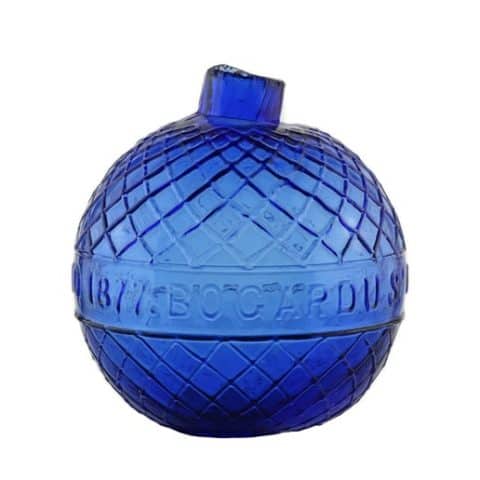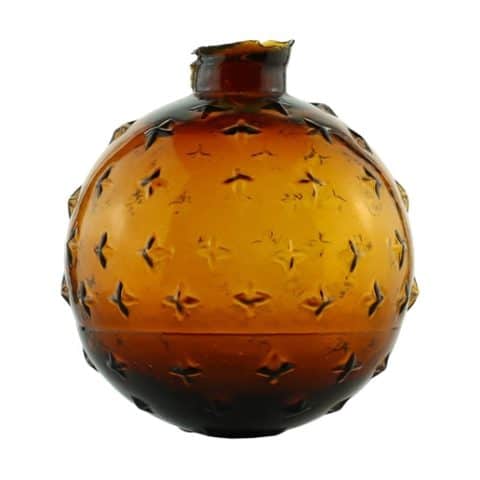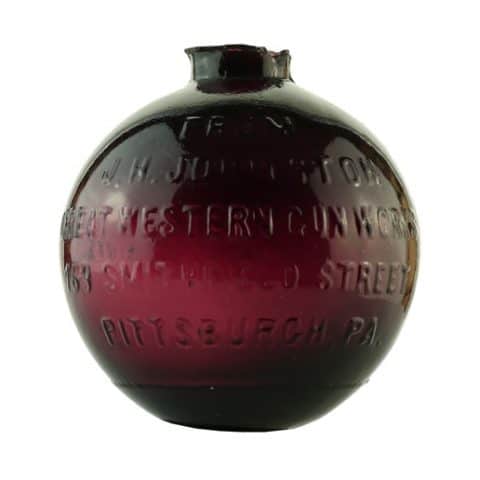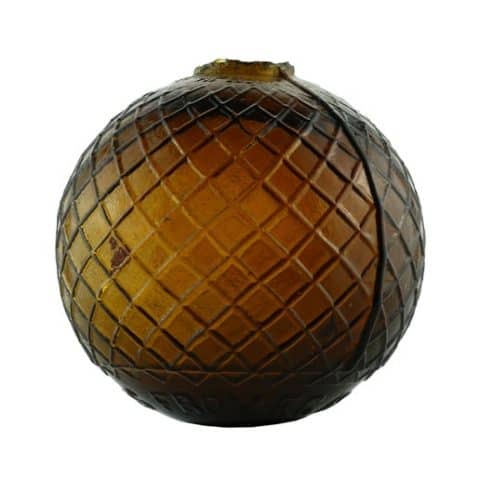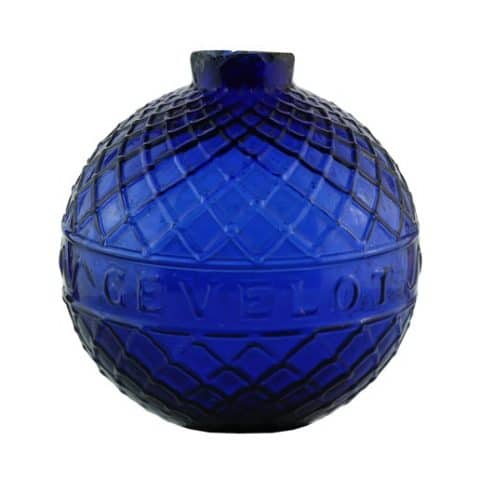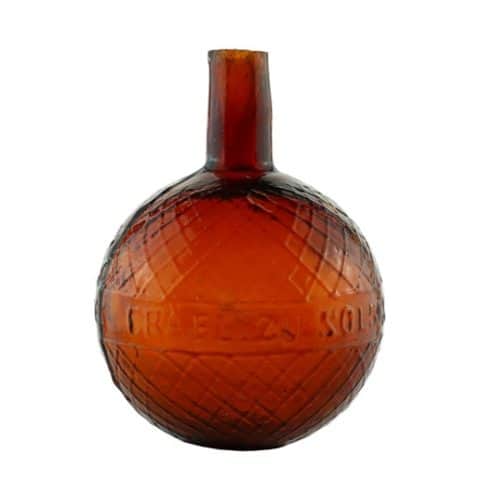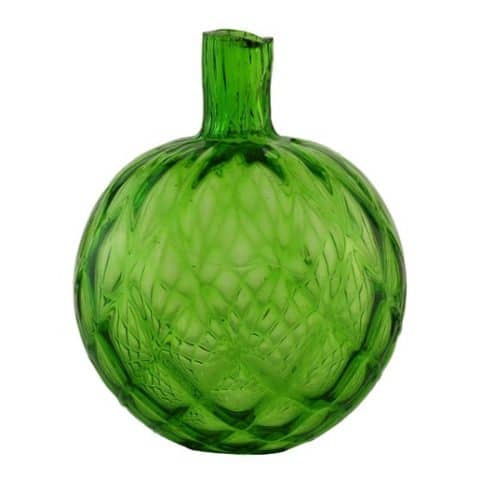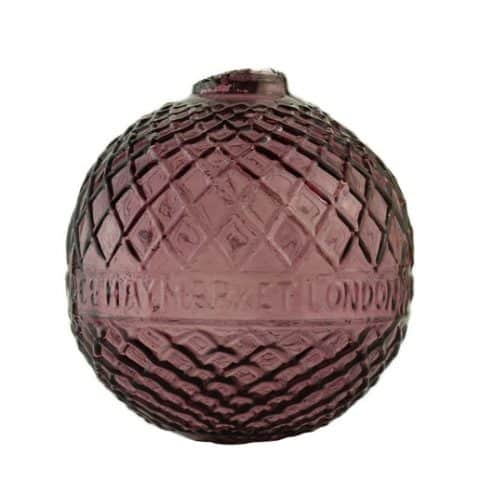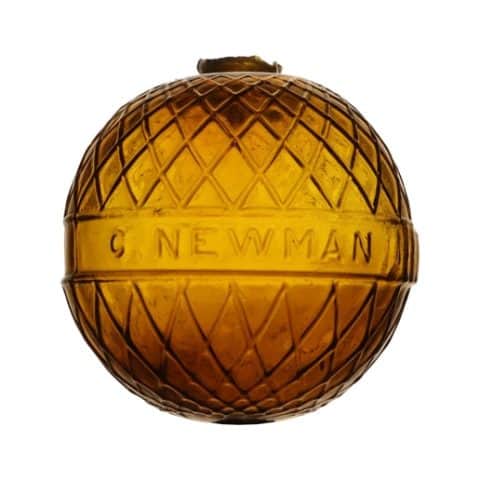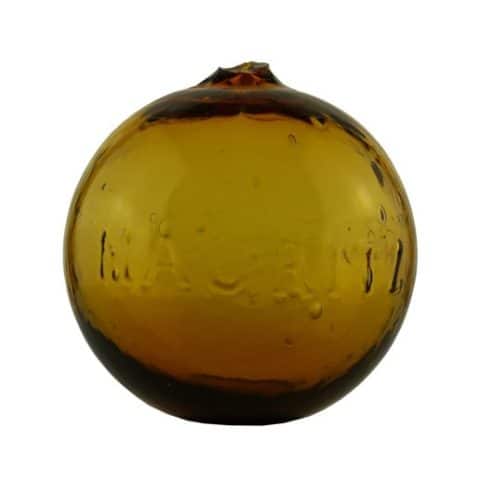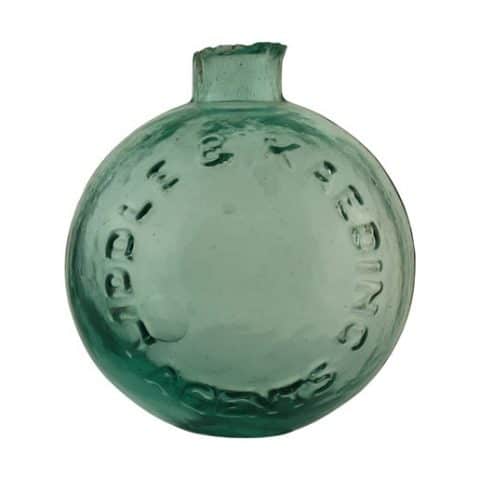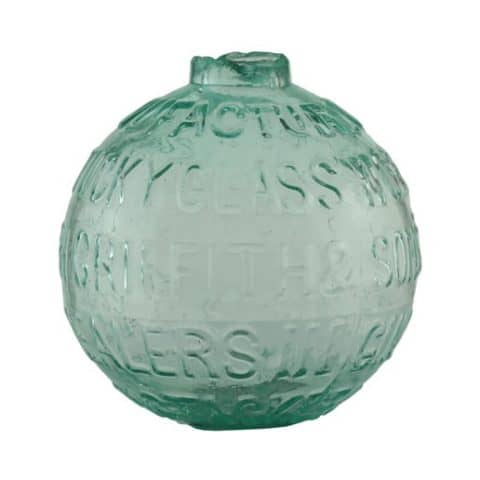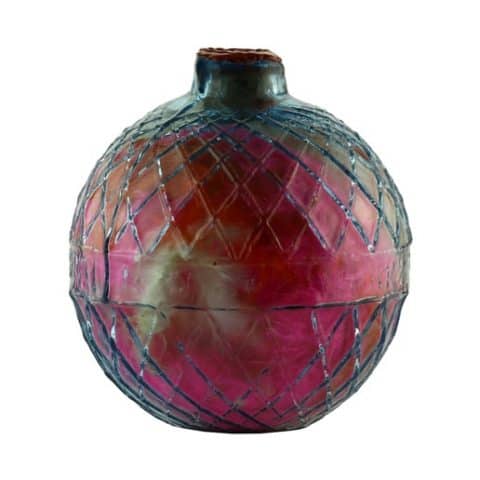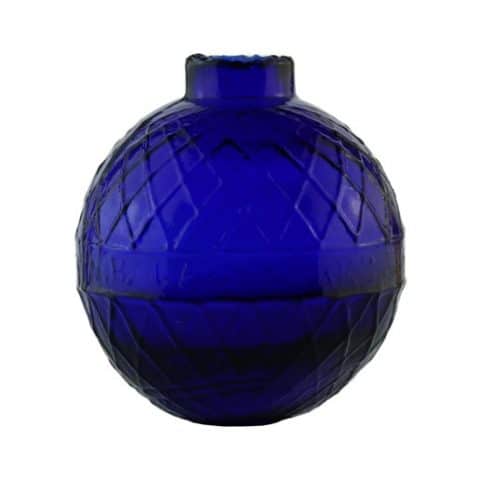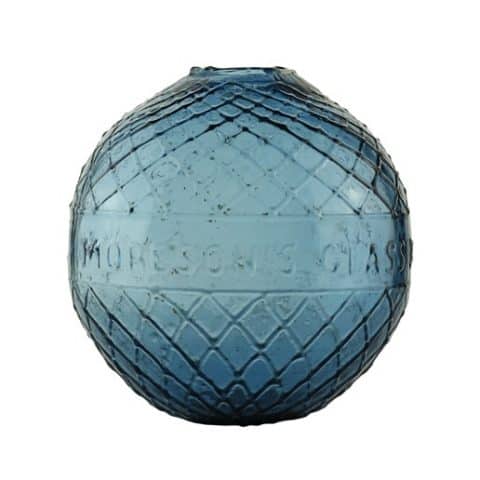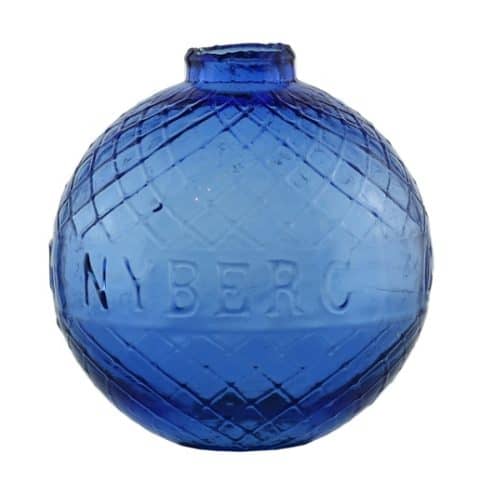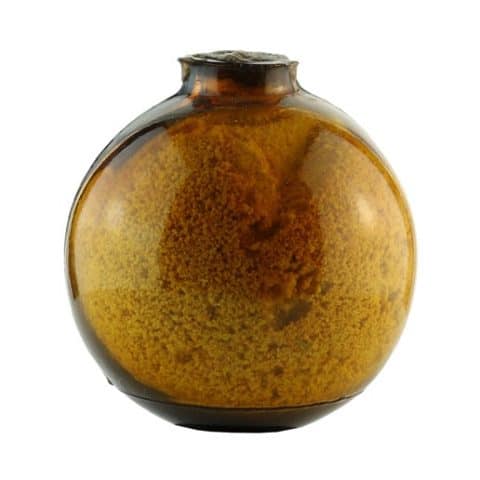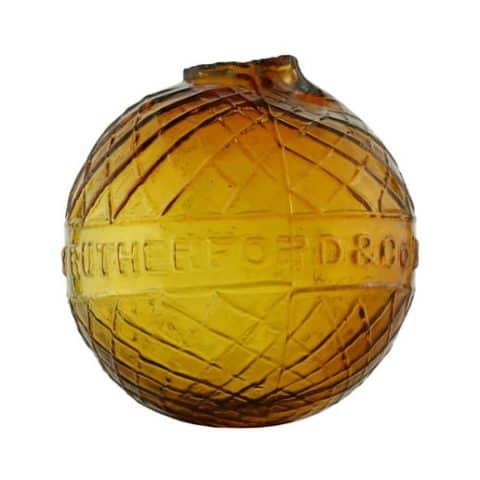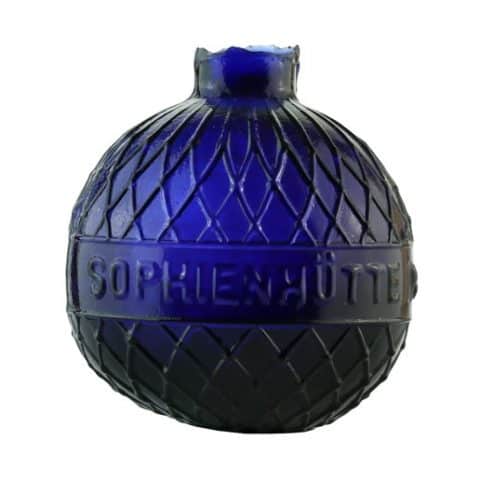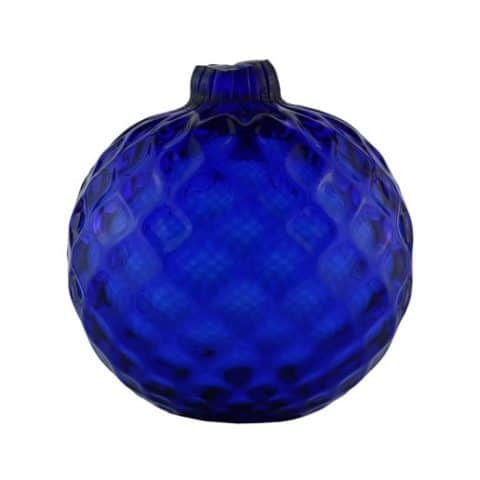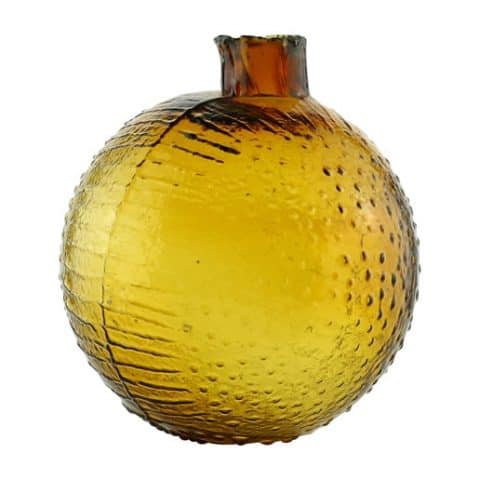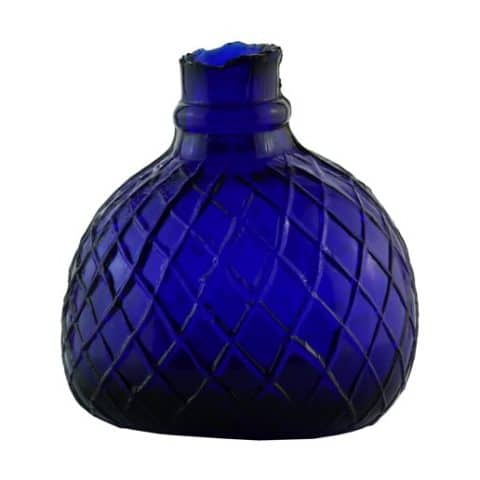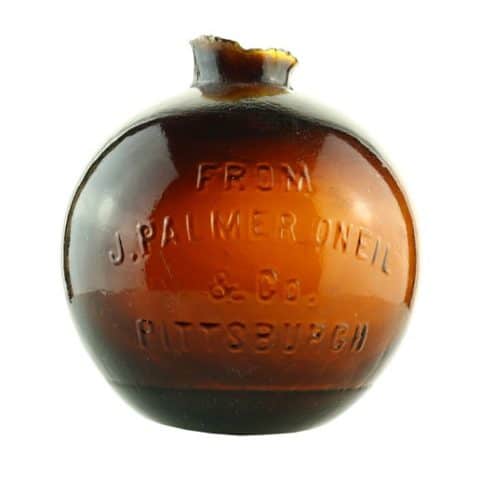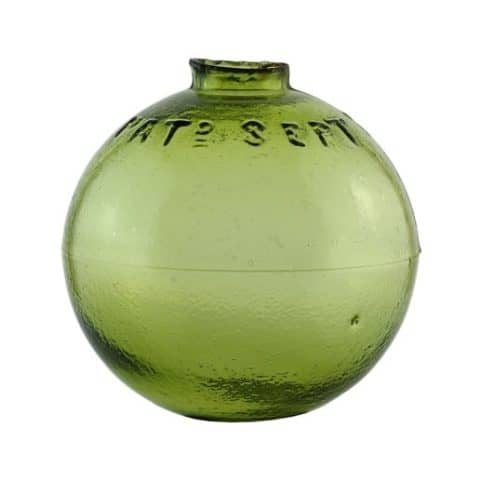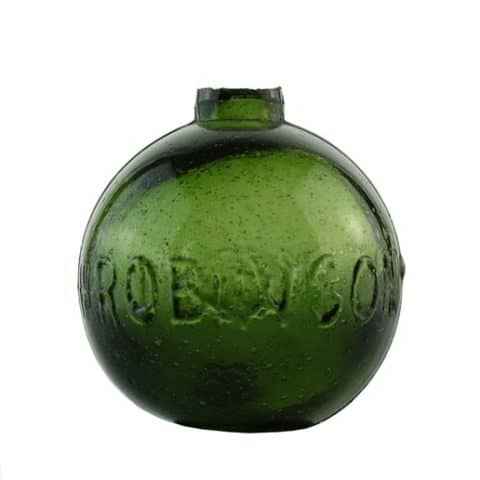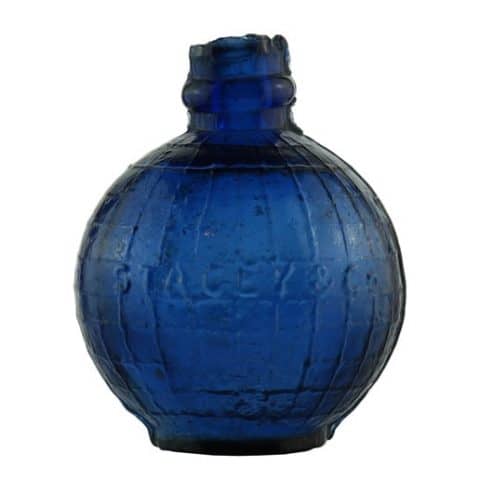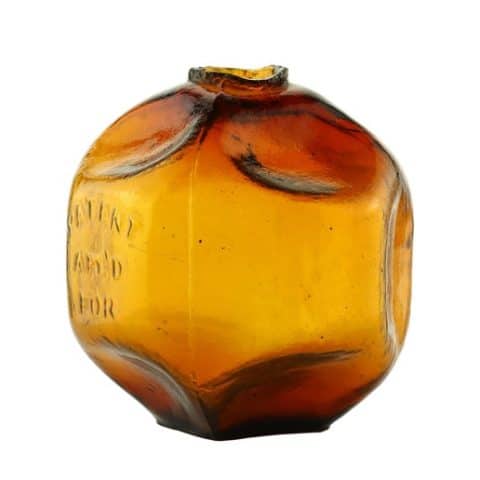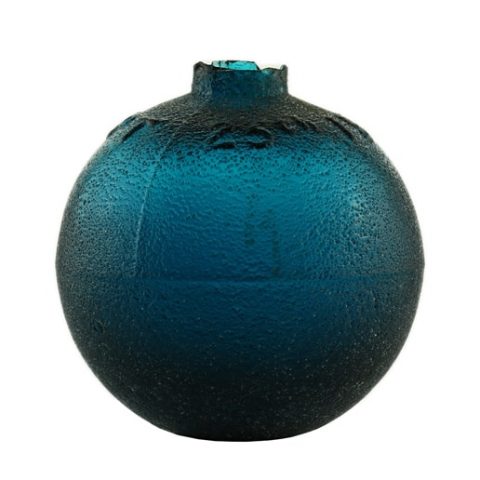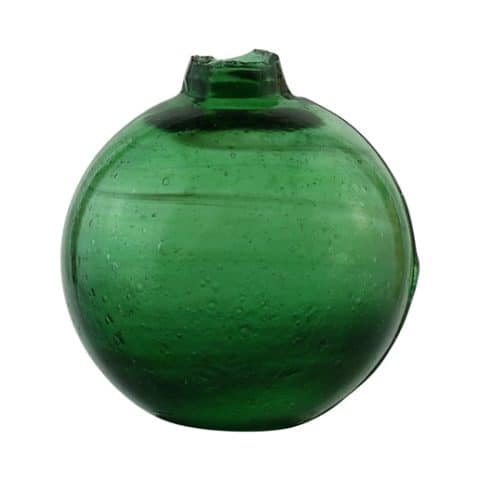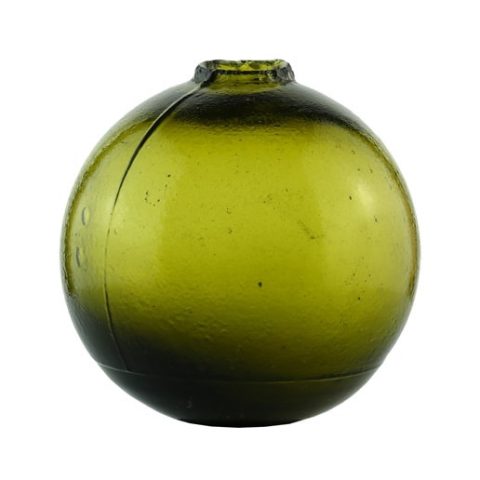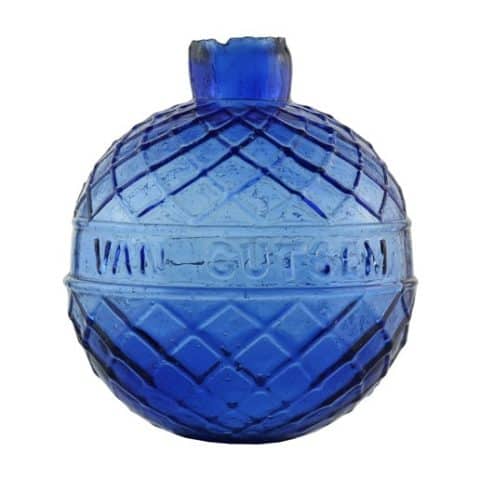Patd Sept 25th 1877 “Sand BALL”
PATD SEPT 25th 1877
“Sand Ball”
American
Peacock Blue
Provenance: Ex: Ralph Finch Collection, ex Alex Kerr Collection, American Glass Gallery
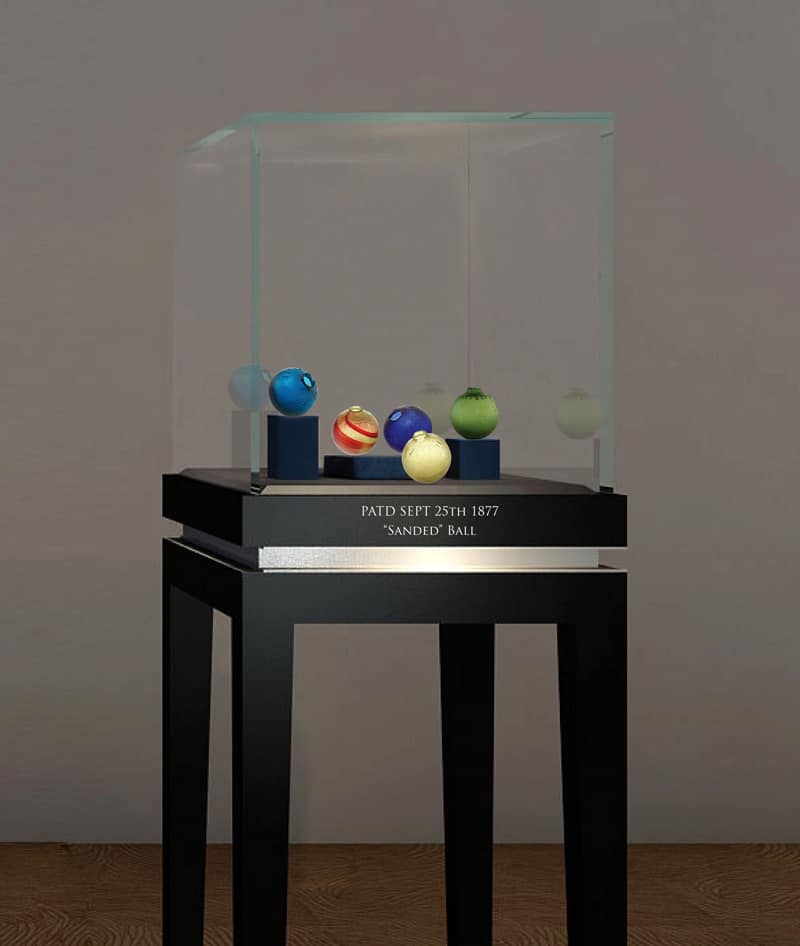
Within our museum Target Ball Gallery, we are featuring an outstanding deep teal, almost peacock blue “Sand Ball” that is embossed ‘PATD SEPT 25TH 1877’ around the shoulder. The ball was made in a 3-piece mold and has an overall pebbly or sandy finish to the glass.
Collectors colloquially call these target balls “sand balls” because as the freshly blown glass was cooling, they rolled the ball in very fine sand, which embedded into the glass, causing a more coarse surface. This allowed for better attraction of the shot to the ball rather than deflecting the incoming shot from the shooter. This rougher surface also minimized any reflection of light from its surface that would have made the airborne ball harder to see.

Heavier than most balls, the “Sand Balls” weighs about 2.7 ounces compared to most Bogardus-style glass balls which weigh generally from 1.5 to 2.5 ounces. The ball is 2-5/8″ in diameter, perfect, and has a sheared mouth.
See another museum example of a Patd Sept 25th 1877 sand ball in medium grass green.
See museum examples of Barton & Sons Unembossed “Sanded” Target Balls.
See the museum example of a Patd Sept 25th 1877 “Unsanded” Target Ball.
There is some thought that the “Sand Ball” may have been made by Whitall, Tatum & Co. of Philadelphia, Pennsylvania, and New York based on an 1881 catalog advertisement for Patent Sanded Trap Balls.
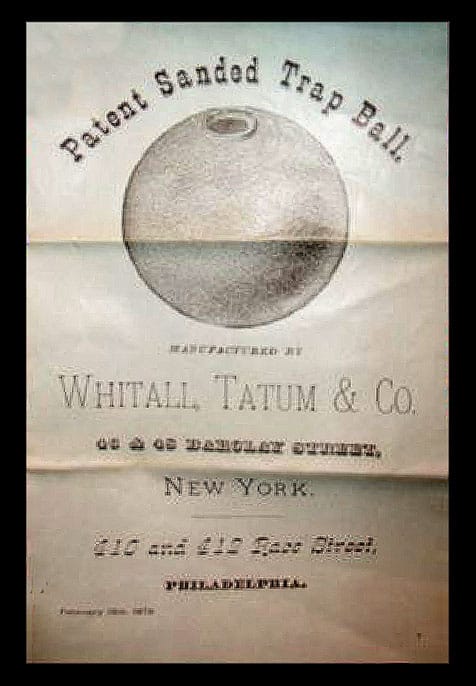
Primary Image: The Patd Sept 25th 1877 sand balls imaged on location by the FOHBC Virtual Museum midwest studio led by Alan DeMaison.
Support: Auction Lot 569: “PATD SEPT 25th 1877” (around shoulder), Target Ball, America, 1877 – 1900. Deep teal, almost a peacock blue coloration, 3-piece mold with an overall pebbly finish to the glass, rough sheared mouth, dia. 2 5/8”, perfect. A very rare target ball, exceptional color, one that will definitely stand out on a shelf. It is surmised that the rough glass texture would be less likely to deflect the shot, and more apt to break when hit by the pellets. Ex. Alex Kerr collection. – American Glass Gallery, The Ralph Finch Collection of Target Balls, Traps and Shooting Ephemera, An Absentee Auction in Six Parts – 2017-2019
Support: Auction Lot 723: “PATD SEPT 25th 1877” (around shoulder), Target Ball, America, 1877 – 1900. Medium grass-green, 3-piece mold with an overall pebbly finish to the glass, rough sheared mouth, dia. 2 5/8”, perfect! Colloquially referred to as the “Sand Ball”, it is a very rare and desirable target ball. The texture, or sanded surface of the glass, was intended to be less reflective and more apt to break, when struck by the shot. – American Glass Gallery, The Ralph Finch Collection of Target Balls, Traps and Shooting Ephemera, An Absentee Auction in Six Parts – 2017-2019
Support: Reference to Trapshooting: The Patriotic Sport: a Book of Ready Reference, Giving a Brief History of the Sport, Its Appliances, Records, Rules, Etc., D. H. Eaton Sportsmen’s Review Pub., 1921
Support: What are target balls? I’m glad you asked! by Ralph Finch
Support: History of Glass Target Balls For Fun, Sure as Shootin’ – Target Balls Hit the Mark by Alex Kerr
Support: Reference to American Glass Gallery, The Ralph Finch Collection of Target Balls, Traps and Shooting Ephemera, An Absentee Auction in Six Parts – 2017-2019
Support Image: Cobalt Blue Example: PAT’d SEPT 25TH 1877 SAND BALL. Three-piece mold. As for rarity, you do not see a lot of these sand balls in any color. A beautiful cobalt blue, it might be a while before you have another chance to bid on one of these beauties. – Jeff Wichmann, American Bottle Auctions.
Support Image: Auction Lot 130: Target Ball, “PATD. SEPT 25TH 1877” (around the shoulder), American, ca. 1877 – 1895, medium bluish-green with an overall sand grain finish, 2 3/8” diameter, rough sheared lip, blown in a three-part mold. Perfect condition. You are bidding on an extremely rare target ball that was reportedly made at the Corning Glass Company. The patent would have been for the sand grain finish that would not allow the shot to easily slide off giving it a better chance of breaking the ball when hit. Carl Killhoffer Collection. – Jim Hagenbuch, Glass Works Auctions, Auction #155
Join the FOHBC: The Virtual Museum is a project of the Federation of Historical Bottle Collectors (FOHBC). To become a member.


